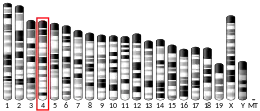| HEMGN | |||||||||||||||||||||||||||||||||||||||||||||||||||
|---|---|---|---|---|---|---|---|---|---|---|---|---|---|---|---|---|---|---|---|---|---|---|---|---|---|---|---|---|---|---|---|---|---|---|---|---|---|---|---|---|---|---|---|---|---|---|---|---|---|---|---|
| Identifiers | |||||||||||||||||||||||||||||||||||||||||||||||||||
| Aliases | HEMGN, CT155, EDAG, EDAG-1, NDR, hemogen | ||||||||||||||||||||||||||||||||||||||||||||||||||
| External IDs | OMIM: 610715 MGI: 2136910 HomoloGene: 14223 GeneCards: HEMGN | ||||||||||||||||||||||||||||||||||||||||||||||||||
| |||||||||||||||||||||||||||||||||||||||||||||||||||
| |||||||||||||||||||||||||||||||||||||||||||||||||||
| |||||||||||||||||||||||||||||||||||||||||||||||||||
| |||||||||||||||||||||||||||||||||||||||||||||||||||
| |||||||||||||||||||||||||||||||||||||||||||||||||||
| Wikidata | |||||||||||||||||||||||||||||||||||||||||||||||||||
| |||||||||||||||||||||||||||||||||||||||||||||||||||
Hemogen is a protein that in humans is encoded by the HEMGN gene.[5]
References
- 1 2 3 GRCh38: Ensembl release 89: ENSG00000136929 - Ensembl, May 2017
- 1 2 3 GRCm38: Ensembl release 89: ENSMUSG00000028332 - Ensembl, May 2017
- ↑ "Human PubMed Reference:". National Center for Biotechnology Information, U.S. National Library of Medicine.
- ↑ "Mouse PubMed Reference:". National Center for Biotechnology Information, U.S. National Library of Medicine.
- ↑ "Entrez Gene: HEMGN hemogen".
Further reading
- Yang LV, Nicholson RH, Kaplan J, et al. (2001). "Hemogen is a novel nuclear factor specifically expressed in mouse hematopoietic development and its human homologue EDAG maps to chromosome 9q22, a region containing breakpoints of hematological neoplasms". Mech. Dev. 104 (1–2): 105–11. doi:10.1016/S0925-4773(01)00376-8. PMID 11404085. S2CID 2968450.
- Yu Y, Zhang C, Zhou G, et al. (2001). "Gene expression profiling in human fetal liver and identification of tissue- and developmental-stage-specific genes through compiled expression profiles and efficient cloning of full-length cDNAs". Genome Res. 11 (8): 1392–403. doi:10.1101/gr.175501. PMC 311073. PMID 11483580.
- Strausberg RL, Feingold EA, Grouse LH, et al. (2003). "Generation and initial analysis of more than 15,000 full-length human and mouse cDNA sequences". Proc. Natl. Acad. Sci. U.S.A. 99 (26): 16899–903. Bibcode:2002PNAS...9916899M. doi:10.1073/pnas.242603899. PMC 139241. PMID 12477932.
- Yang LV, Heng HH, Wan J, et al. (2004). "Alternative promoters and polyadenylation regulate tissue-specific expression of Hemogen isoforms during hematopoiesis and spermatogenesis". Dev. Dyn. 228 (4): 606–16. doi:10.1002/dvdy.10399. PMID 14648837. S2CID 26030697.
- Liu CC, Chou YL, Ch'ang LY (2004). "Down-regulation of human NDR gene in megakaryocytic differentiation of erythroleukemia K562 cells". J. Biomed. Sci. 11 (1): 104–16. doi:10.1159/000075293. PMID 14730214. S2CID 202650770.
- Humphray SJ, Oliver K, Hunt AR, et al. (2004). "DNA sequence and analysis of human chromosome 9". Nature. 429 (6990): 369–74. Bibcode:2004Natur.429..369H. doi:10.1038/nature02465. PMC 2734081. PMID 15164053.
- Li CY, Zhan YQ, Xu CW, et al. (2005). "EDAG regulates the proliferation and differentiation of hematopoietic cells and resists cell apoptosis through the activation of nuclear factor-kappa B". Cell Death Differ. 11 (12): 1299–308. doi:10.1038/sj.cdd.4401490. PMID 15332117.
- Gerhard DS, Wagner L, Feingold EA, et al. (2004). "The status, quality, and expansion of the NIH full-length cDNA project: the Mammalian Gene Collection (MGC)". Genome Res. 14 (10B): 2121–7. doi:10.1101/gr.2596504. PMC 528928. PMID 15489334.
- An LL, Li G, Wu KF, et al. (2005). "High expression of EDAG and its significance in AML". Leukemia. 19 (8): 1499–502. doi:10.1038/sj.leu.2403808. PMID 15920494. S2CID 5280303.
- Yang LV, Wan J, Ge Y, et al. (2006). "The GATA site-dependent hemogen promoter is transcriptionally regulated by GATA1 in hematopoietic and leukemia cells". Leukemia. 20 (3): 417–25. doi:10.1038/sj.leu.2404105. PMID 16437149. S2CID 9613437.
- Ling B, Zhou Y, Feng D, et al. (2007). "Down-regulation of EDAG expression by retrovirus-mediated small interfering RNA inhibits the growth and IL-8 production of leukemia cells". Oncol. Rep. 18 (3): 659–64. doi:10.3892/or.18.3.659. PMID 17671716.
This article is issued from Wikipedia. The text is licensed under Creative Commons - Attribution - Sharealike. Additional terms may apply for the media files.



